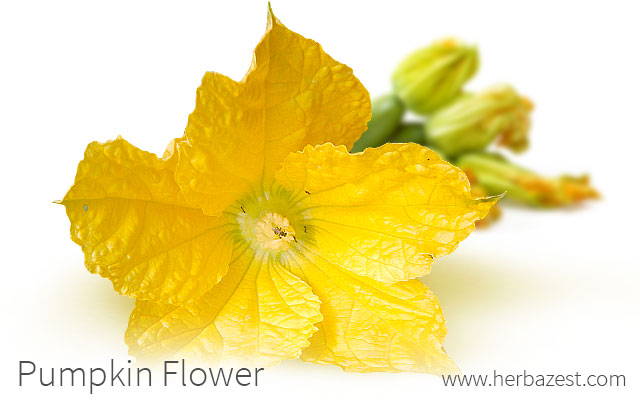Pumpkins produce attractive, funnel-shaped flower blossoms. They are orange or yellow in color, and may be as wide as four to five inches (10 – 13 cm) in diameter. Pumpkin flowers are sometimes consumed as vegetables, or used for other purposes, like home decor.
Pumpkin Flower Parts
Pumpkin plants contain both male (staminate) and female (pistillate) flower parts, that come together to produce the pumpkin fruit. Male flowers usually appear first; their pollen enticing bees to land in the vicinity, just in time for the arrival of the female blossoms.
Though they can have a relatively short life span, of only a day or so, before dropping off, male pumpkin flowers have an important job. By the time the female pumpkin flowers emerge, pollination occurs as the bees further establish this well-rehearsed routine, unwittingly transferring pollen between the male and female leaves. Thus, heavily reliant on its flowers, the pumpkin fruit begins to grow outwardly from the seed-carrying, newly-pollinated, female blossoms.
Importance of the Pumpkin Flower
Environmental Importance
As the honeybee population has declined by about 50% over the past several decades, flowering plants have become of great importance in the conservation and promotion of honeybee colonies. Without them, a large part of the ecosystem that depends on pollinators could be at great risk.
The sweet fragrance of the pumpkin flower attract bees, however, successful pollination requires that the pumpkin grower understand the biology of the pollinator species and provide a suitable environment.
Culinary Importance
Although not as popular as the nutritious pumpkin fruit, the pumpkin flowers are edible, and are often prepared like vegetables. Light and buttery, they may be used in a variety of different salads, or sprinkled over filling grain dishes, like risotto, brown rice, and quinoa.
Pumpkin flowers are not a very significant source of fat. For best results, combine summer pumpkin flowers with other vegetables in a light coating of plant-based fat, like olive oil, in order to enhance their flavor and better compliment their nutrients. Consuming male pumpkin flowers is recommended, as female blossoms produce fruits.
Other Applications
- Aromatherapy. Pumpkin flowers produce a sweet, pleasant fragrance, which make their essence popular for use in perfumes and cosmetics.
- Decoration. Pumpkin blossoms are delicate and colorful, and have similar uses to other flowers in home decor.
The flowers are one of the most important parts of the pumpkin plant. Both versatile and visually-appealing, the pumpkin flower is essential to the overall reproduction of the plant, and has a variety of culinary and cosmetic uses.
Sources
- Missouri Botanical Garden, Horticulture Questions and Answers
- Penn State University, Pumpkin Pollinators
- Purdue University, Cucurbits, 1994
- University of California, Cucurbitacae - Fruits for peons, pilgrims, and pharaohs
- University of Illinois, Extension Office, Pumpkins and more, 2016
- Medicinal Plants of the World, pp. 117, 407
- Kew Royal Botanic Gardens, Cucurbita pep (pumpkin)




